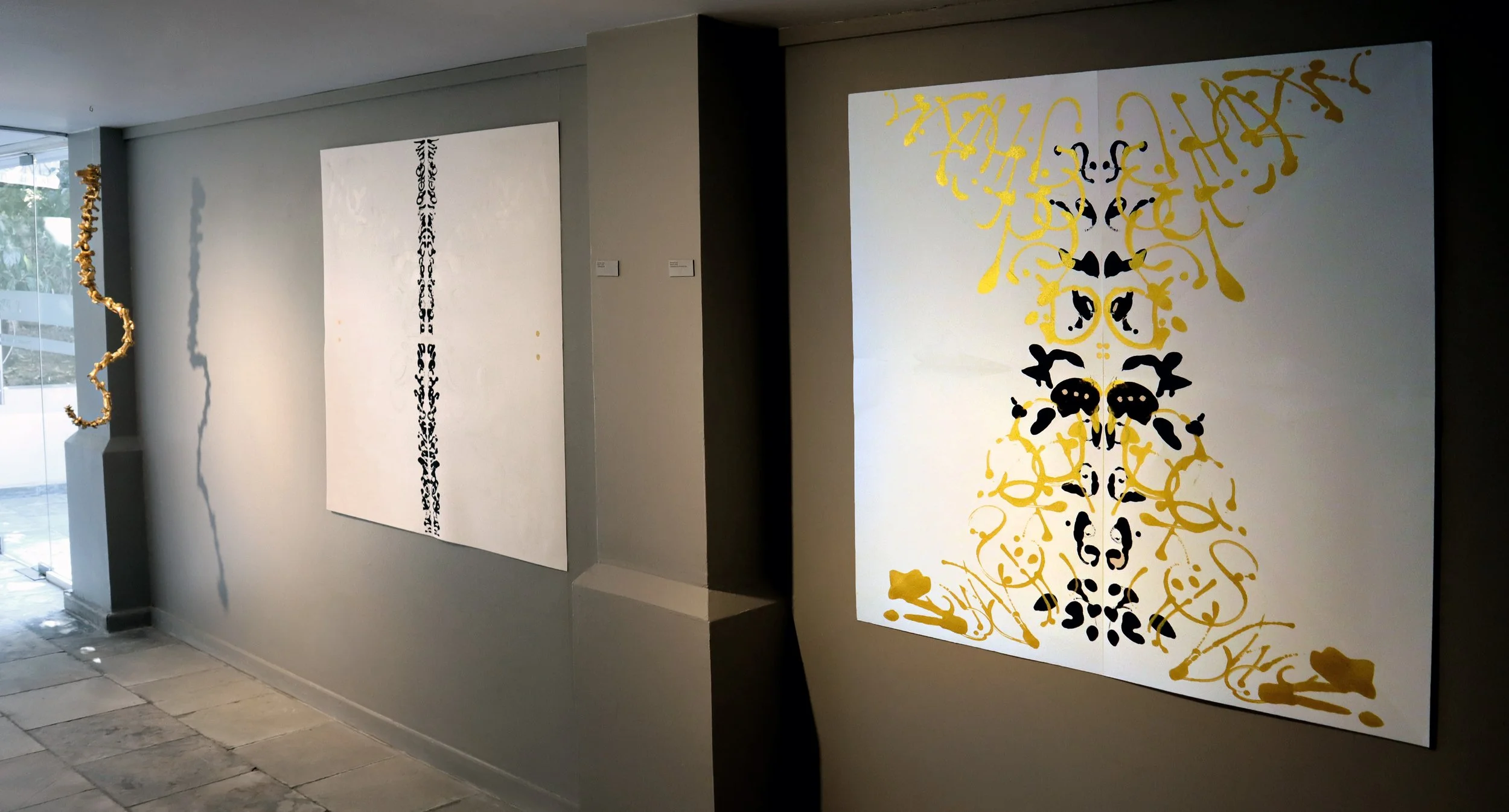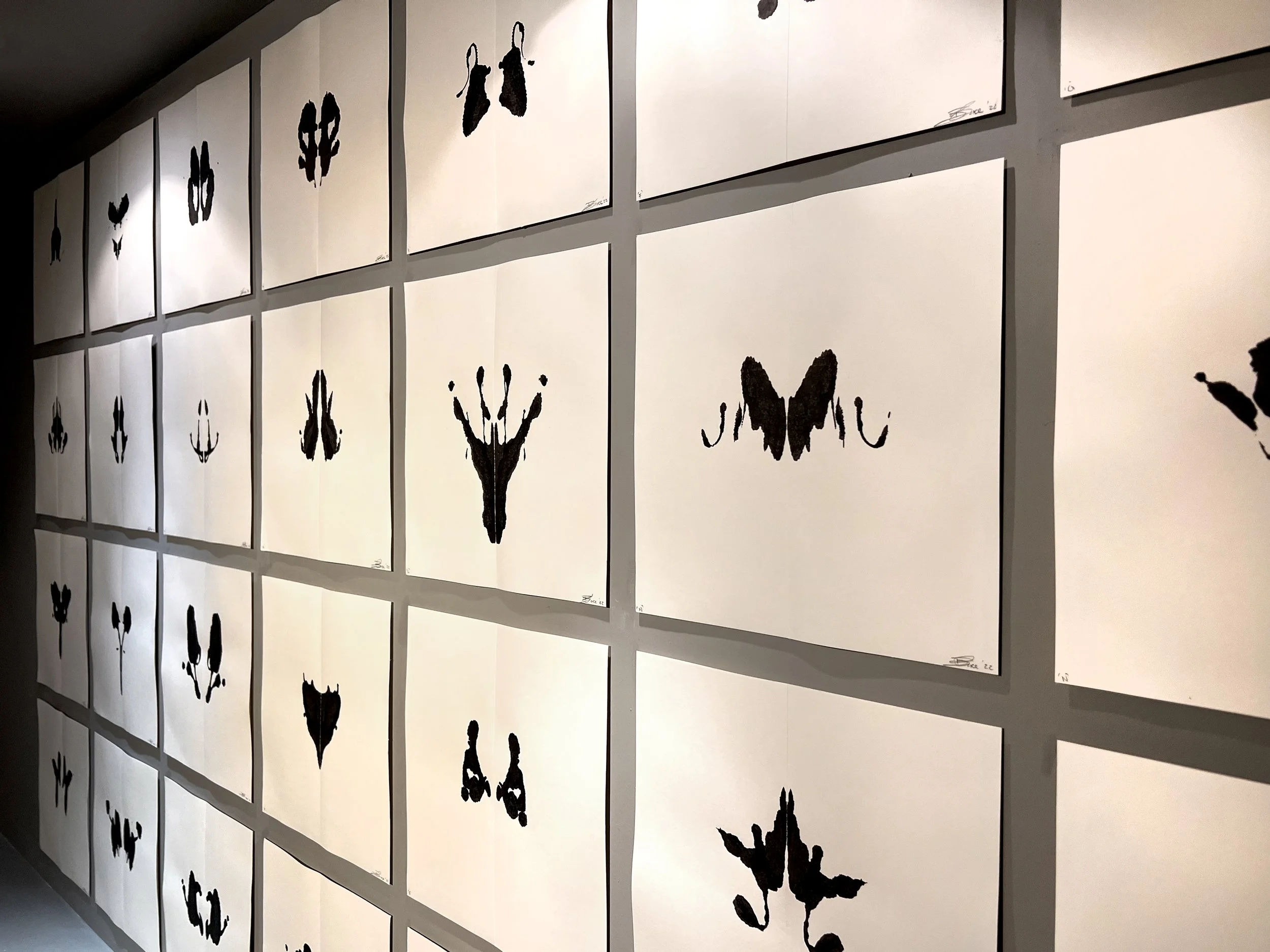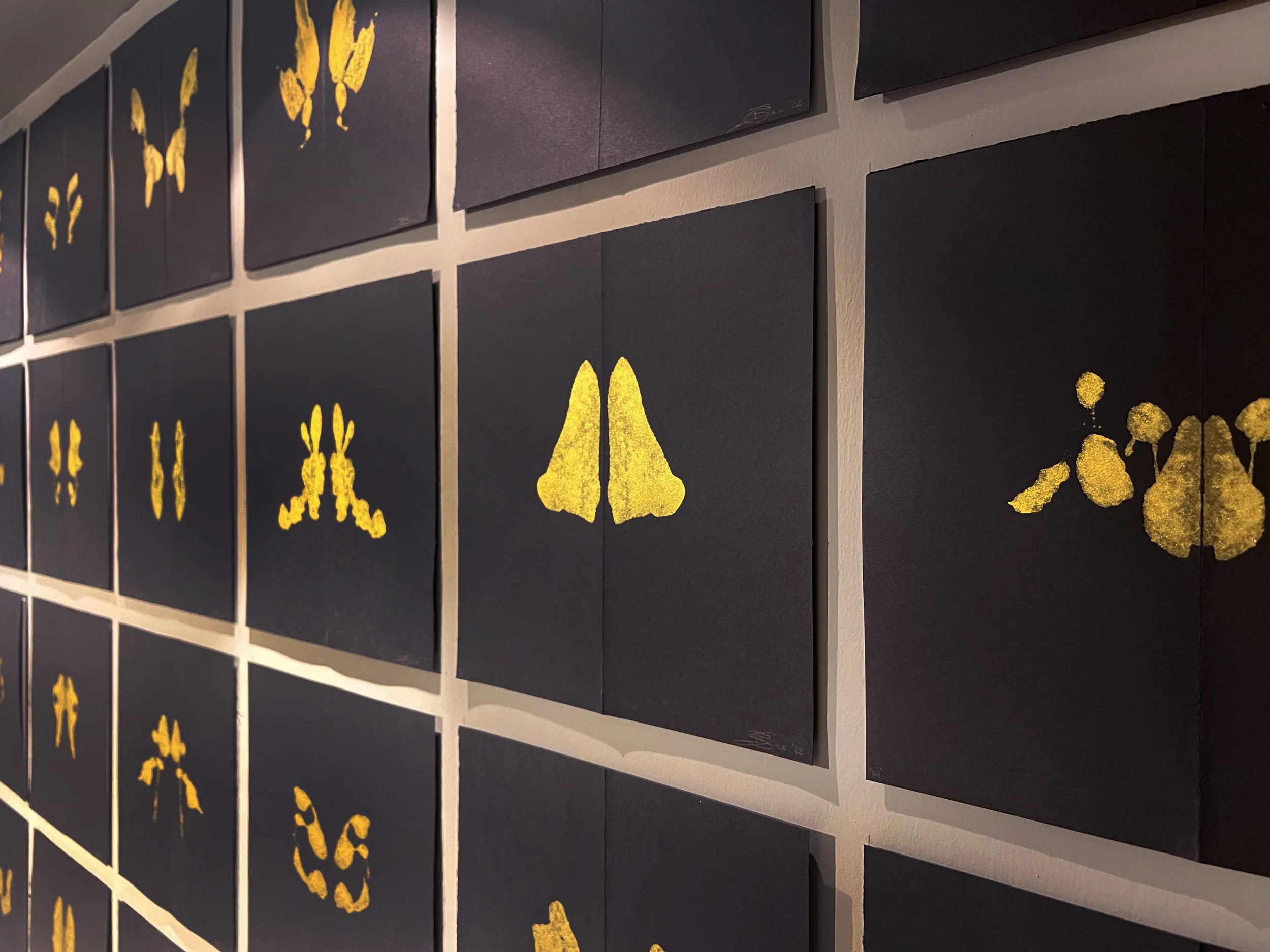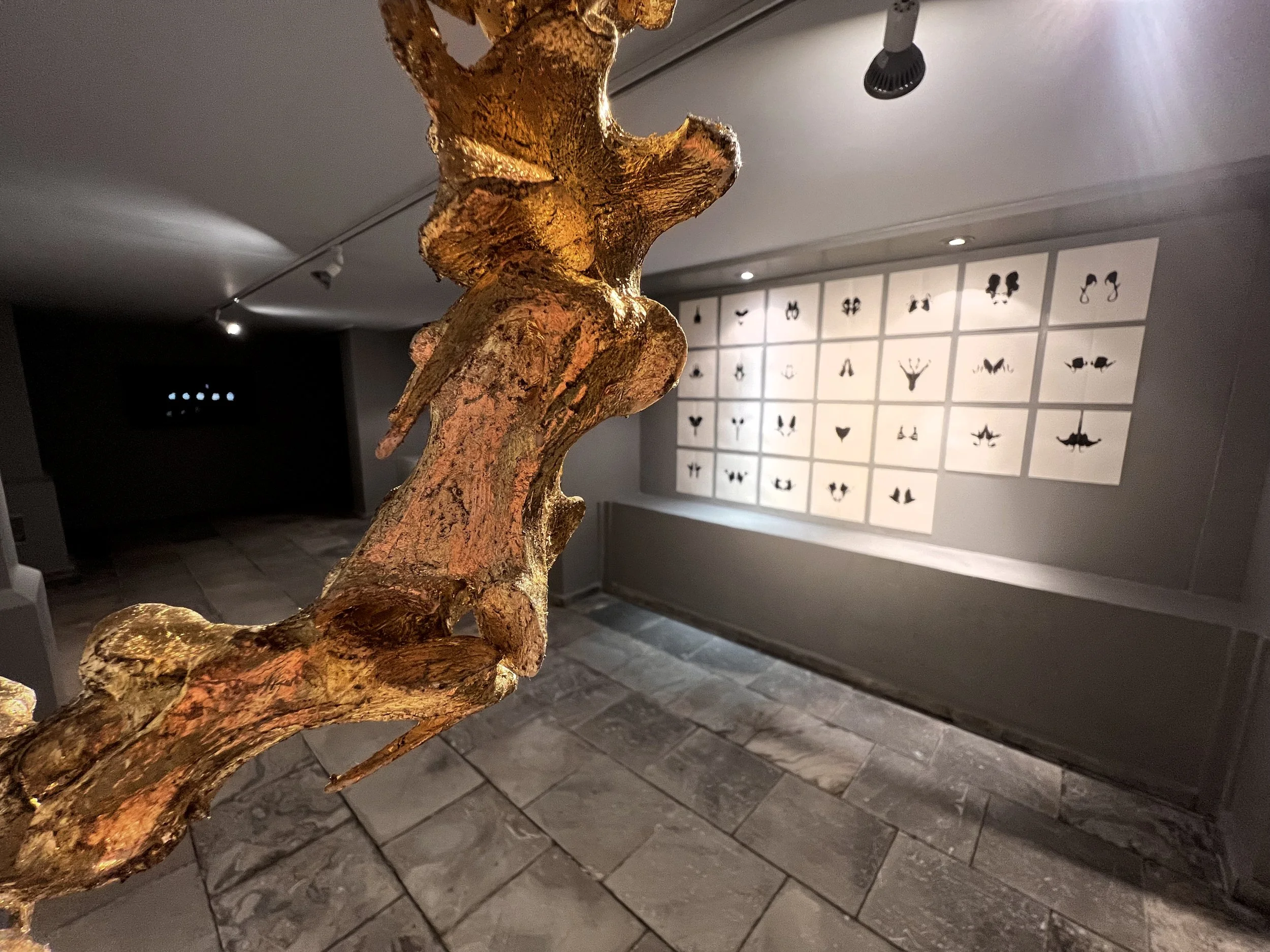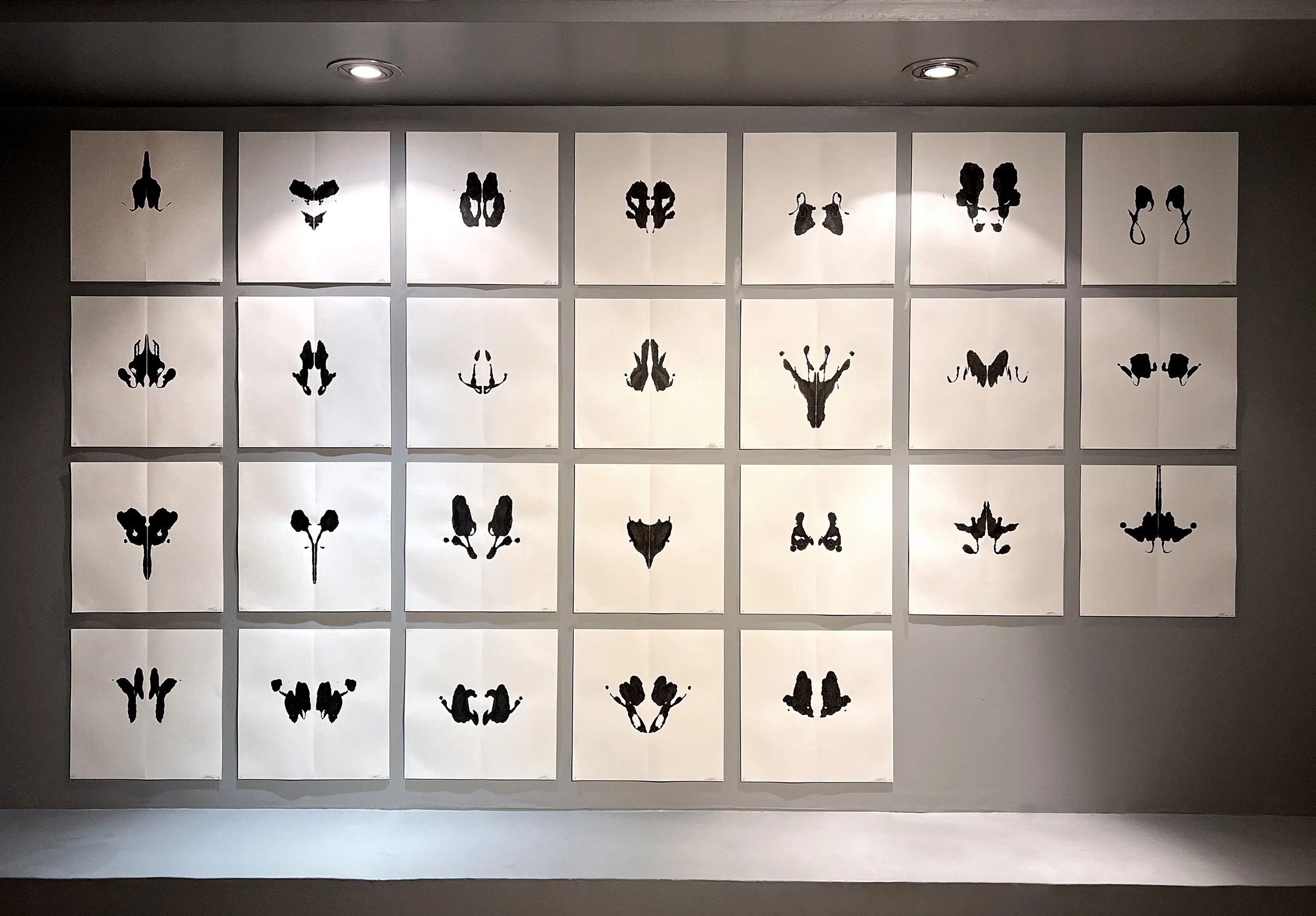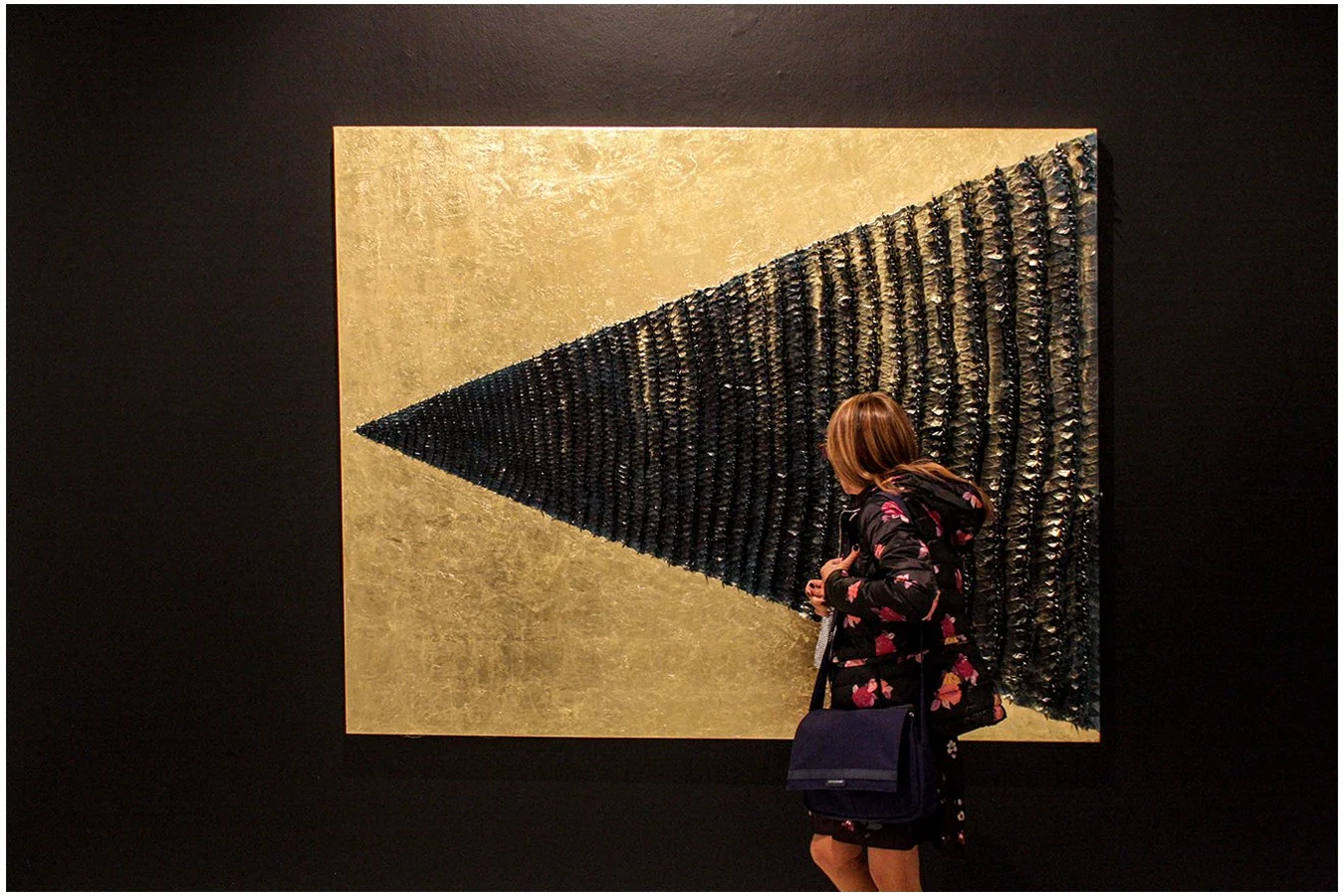
FOLD, ENFOLD, UNFOLD, MIRROR, REFLECT, CREASE, CREVICE, CROSS, CONVERT, CONSTRUE, TRANSLATE, SHIFT, SLIP, SLIDE, STEAL, ABSTRACT
The origami works – made from her parents’ abandoned Encyclopaedia Britannica set, purchased when they were expecting their first child – have been crafted to Lace’s design by her dedicated assistant Masetho Mohohlo. They invoke patience and the process of transitioning into meditative states. Each carefully crafted piece – of which there are thousands – is beautifully still.
For Lace, the origami works invoke the loss associated with the technological shift from information in hard copy into digital forms that has defined our era. In tearing these pages from the Britannica, folding and stitching them, she gives them another life. The encyclopedia, and its words will remain physically present – potentially for a long time to come.
Geometry is mysteriously and symbolically everywhere in this show. Some works are circular, Forked Flock Reflected, (2017) and Encylopaedia Britannica Revolve (2016-2017), others have strong triangular elements, the installation To Unfold and Reflect (2017), and Encylopaedia Dart (2017), is lit in such a way that it casts dramatic shadows, reminiscent of an electrocardiogram.
These works are imbued with a sense of immediacy and transience as though they were collective shooting stars moving through the sky, or a flock of swallows in flight. They recall the weightlessness of her bronze-cast wish bones and the work of MC Escher, who is a particular inspiration for Lace.
It is believed that if you fold 1 000 paper cranes, your wishes will come true. Sadako Sasaki was living in Hiroshima when the atomic bomb was dropped on Japan on 6 August 1945, inflicting her with the ‘A-bomb disease’, leukaemia, at the age of eleven. Ten years later, she died, having folded 1 300 paper cranes. In perseverance there is peace. Perhaps, in the end, passion leads to truth. Perhaps there is little choice in this, but to surrender. Sasaki’s story is folded into the origami layers of this exhibition. Lace shows us that light can drop into dark places and that dark places with light shone on them can take flight.
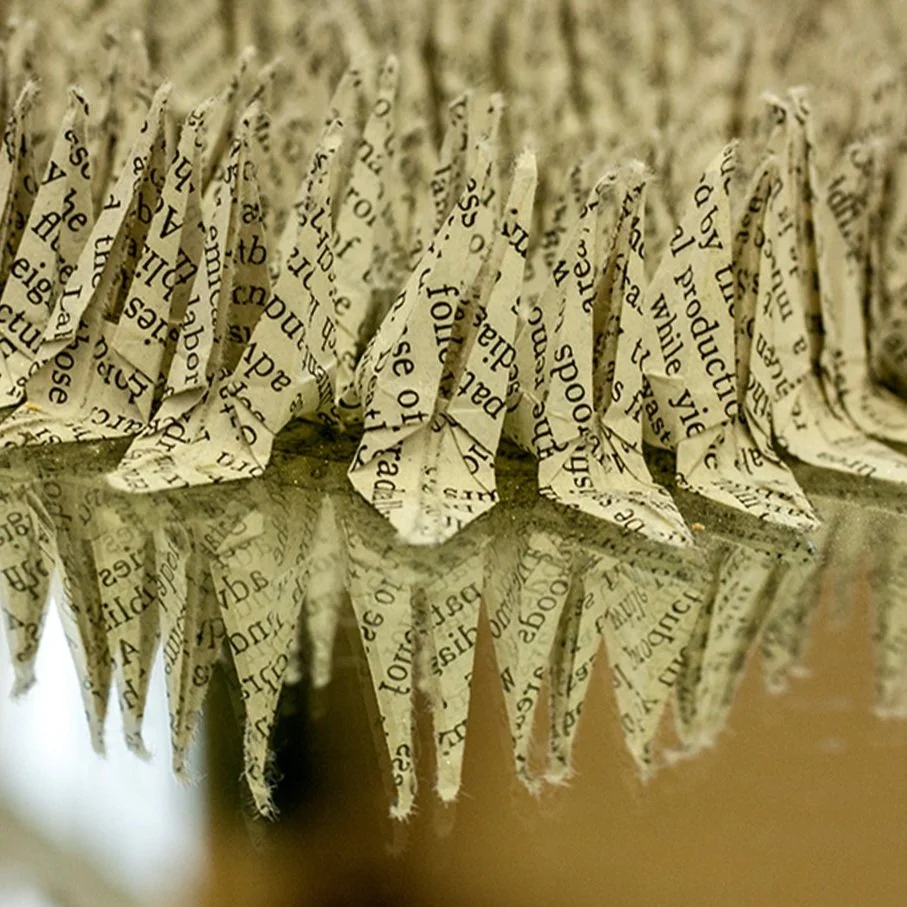
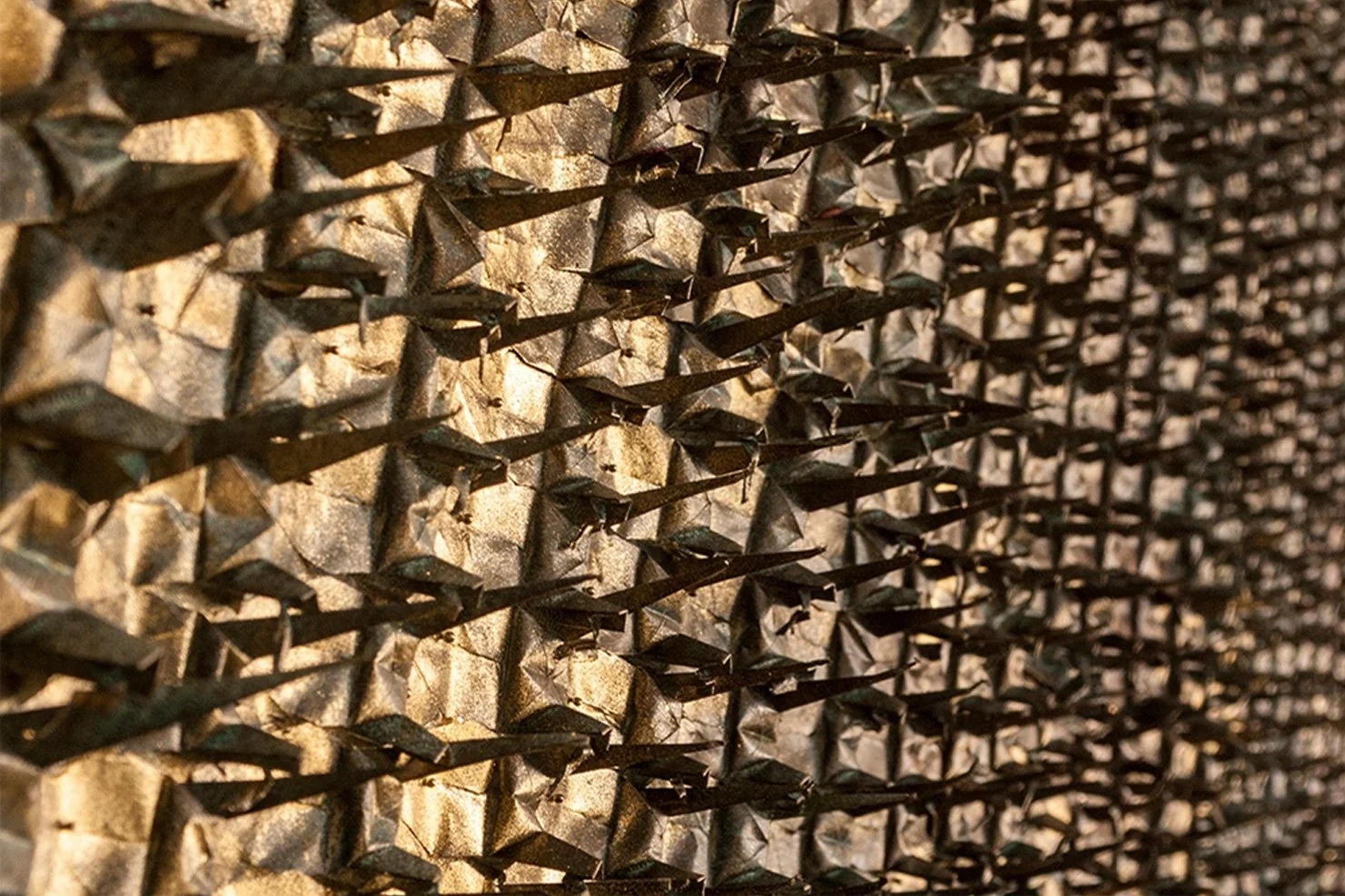
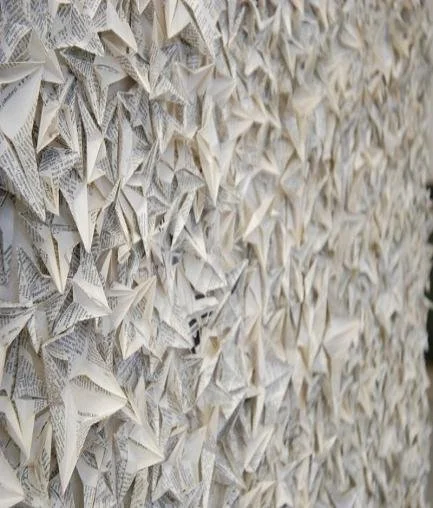


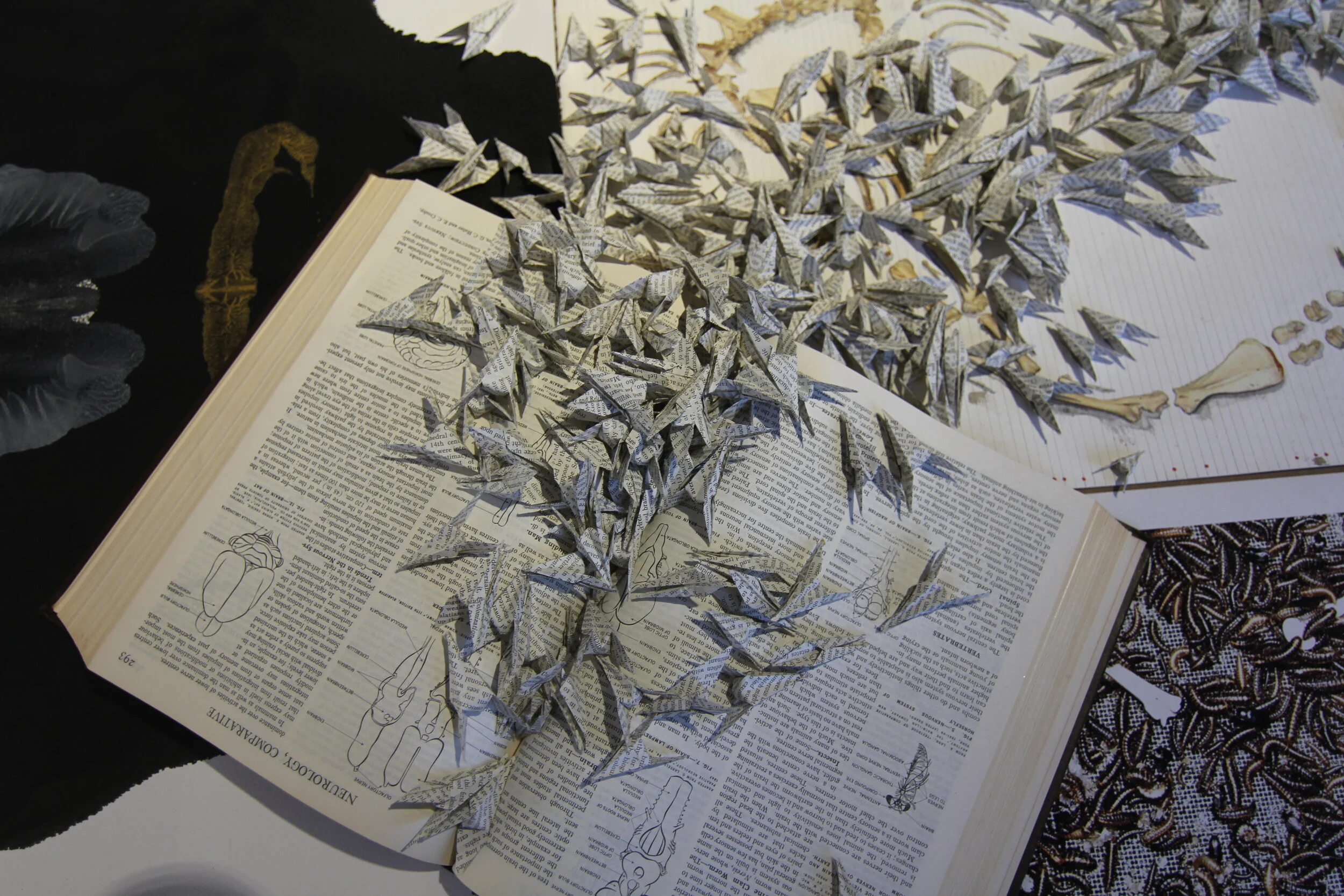
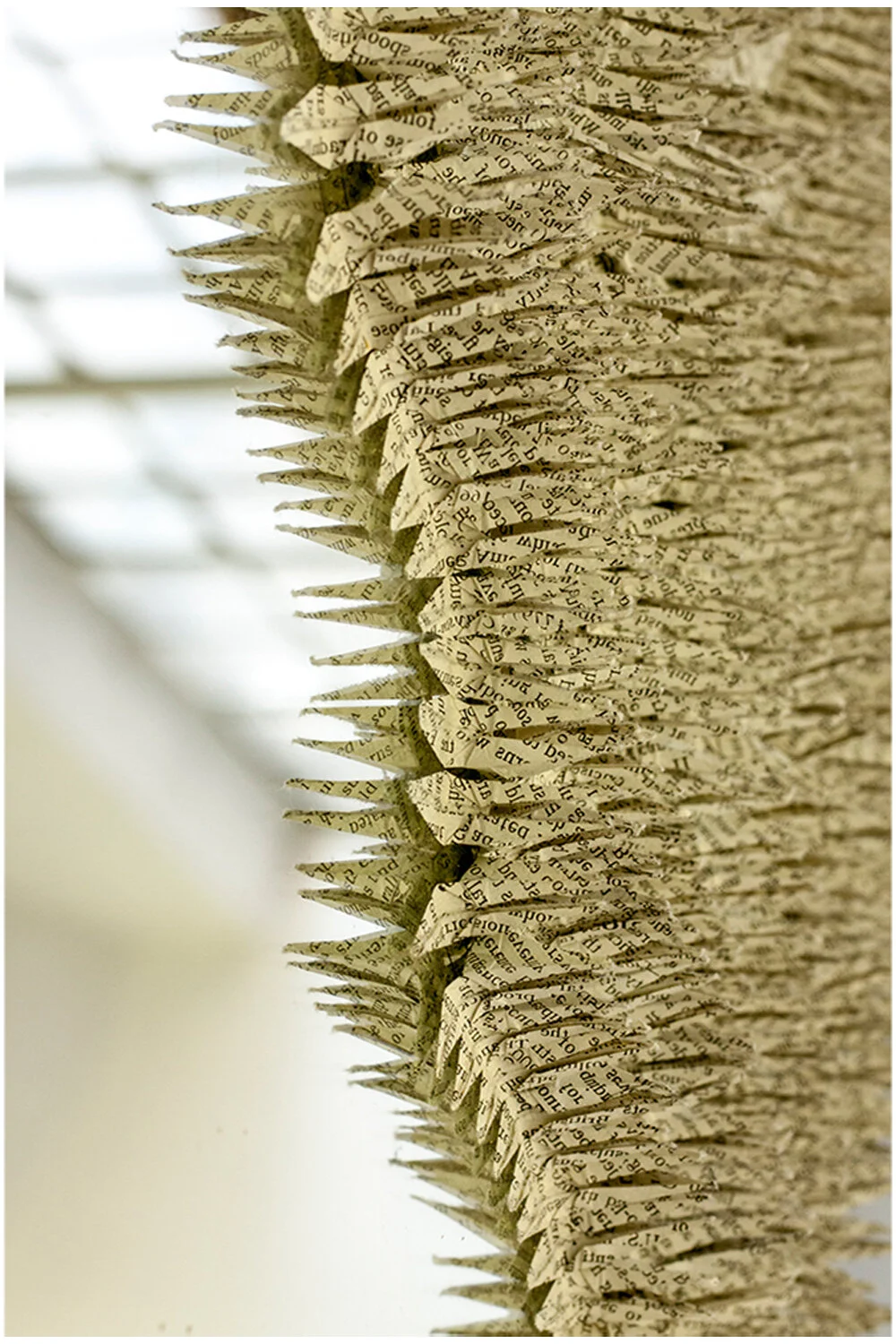
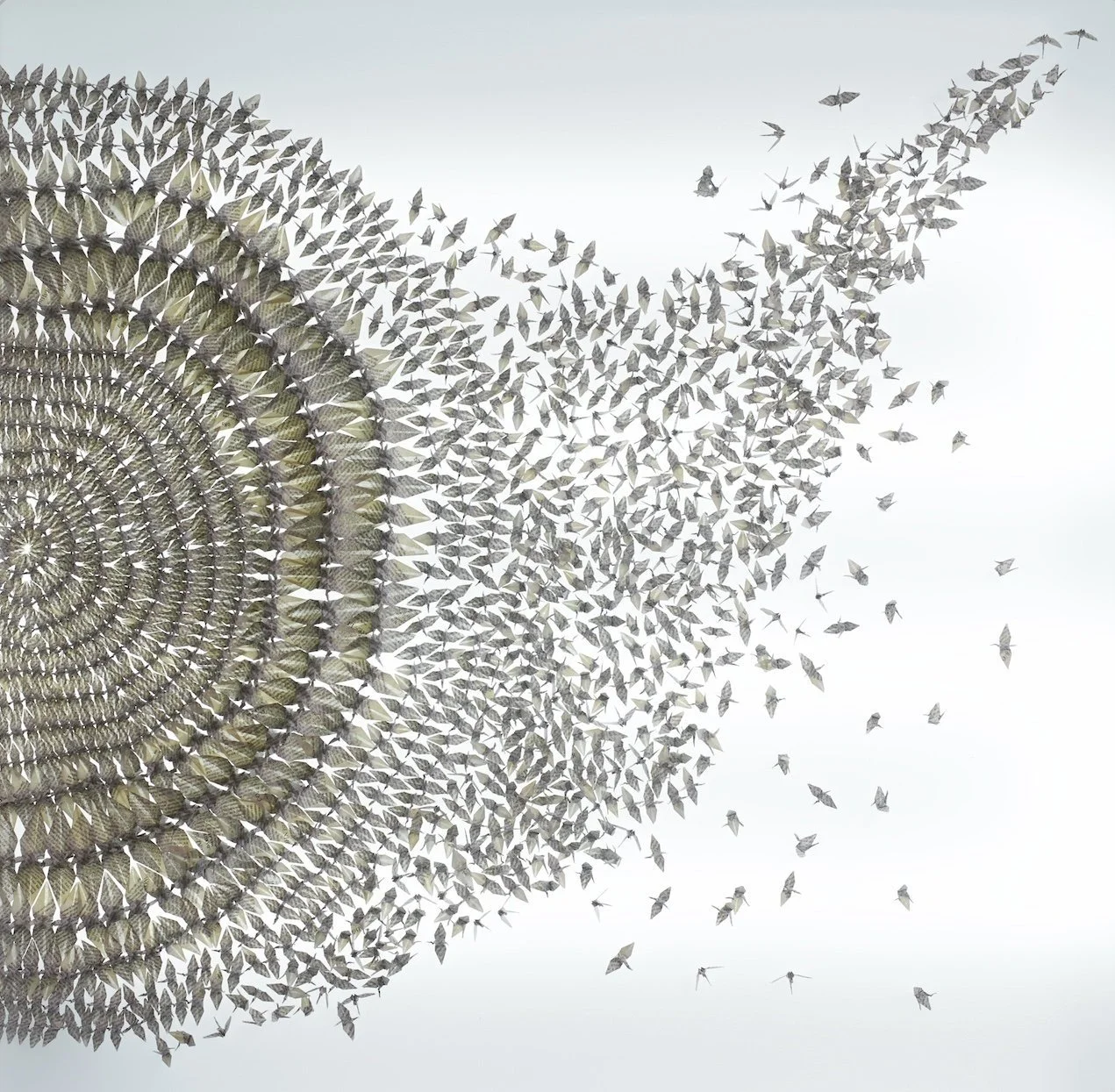

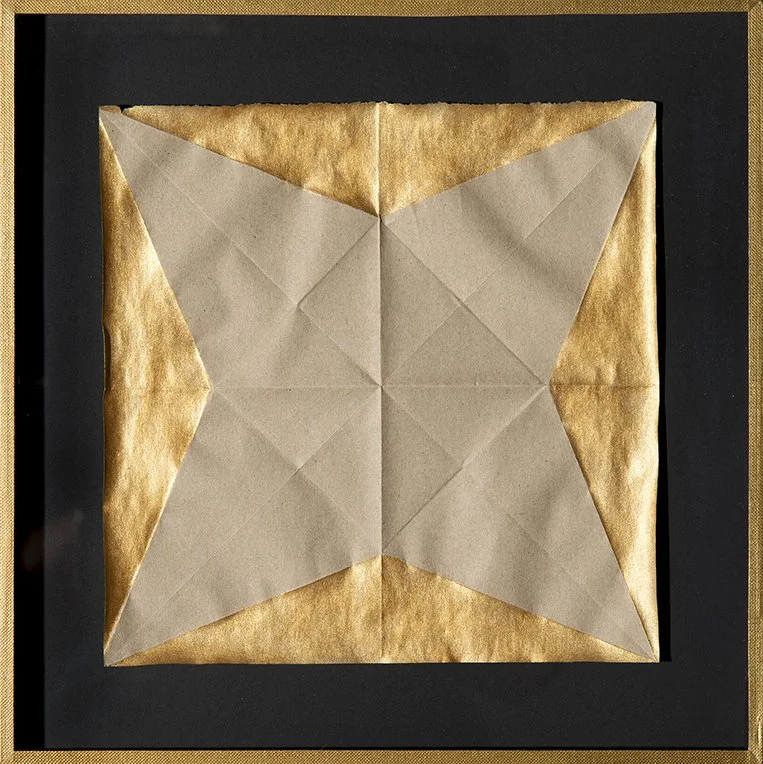
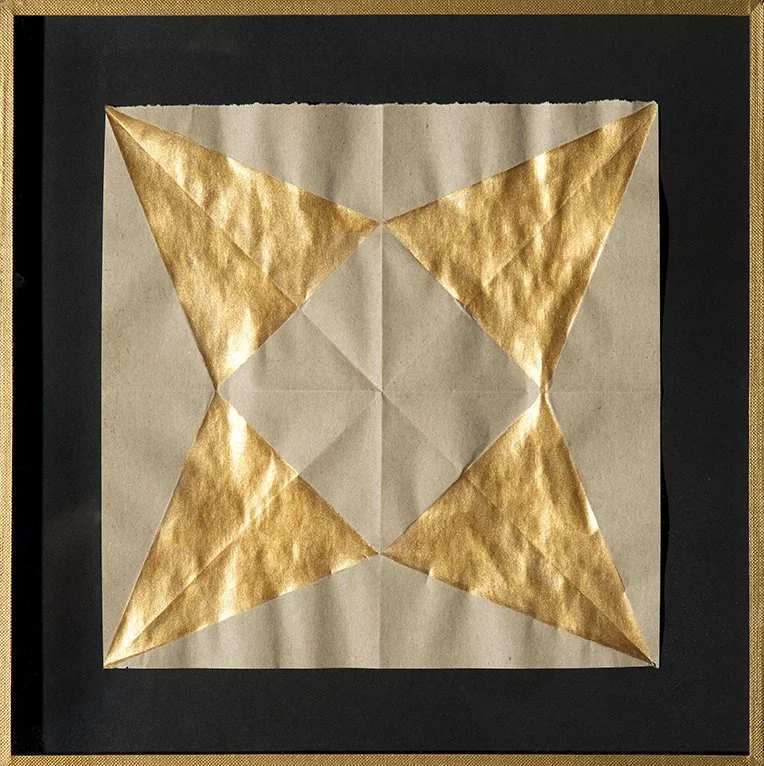
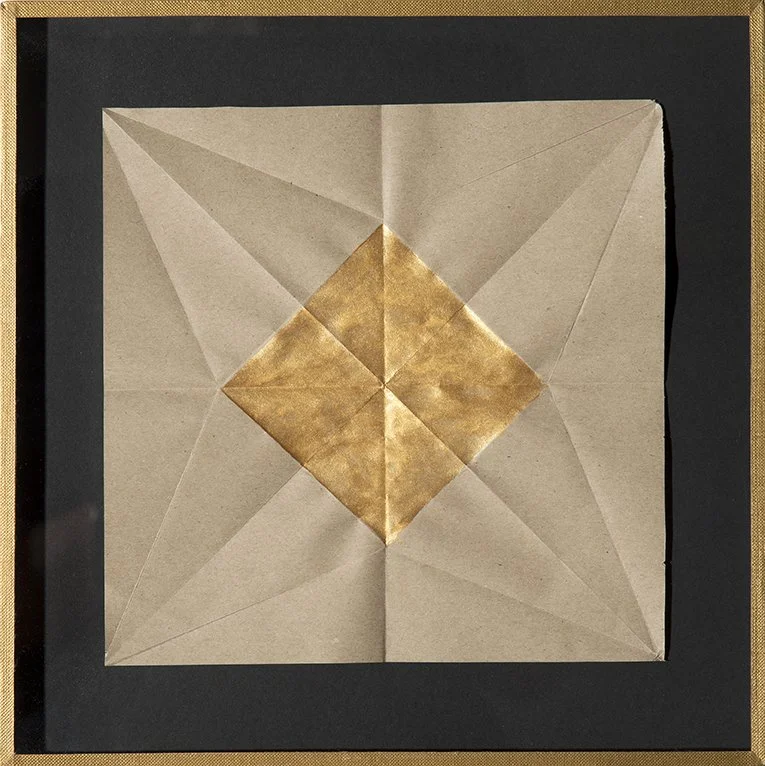
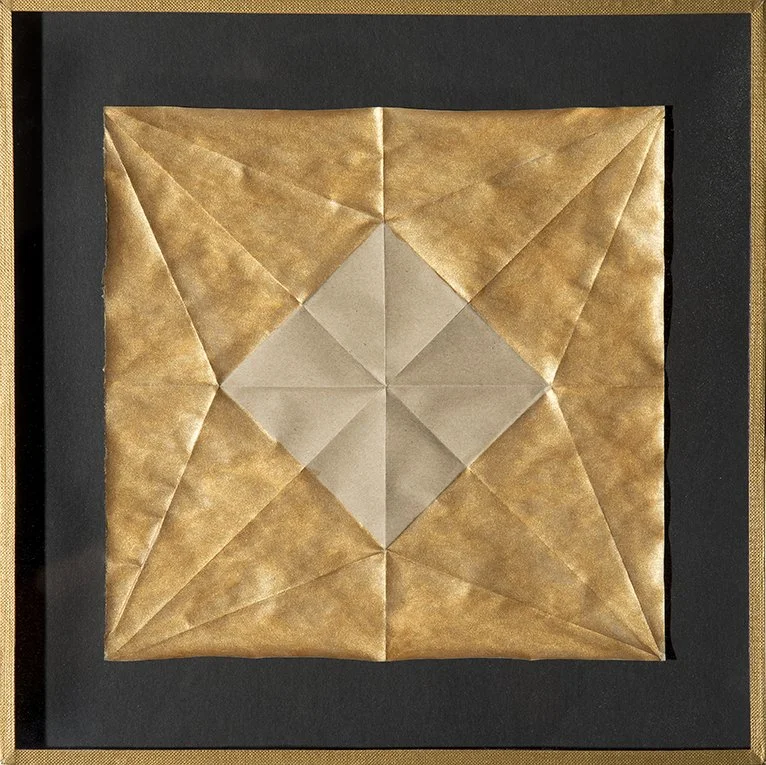
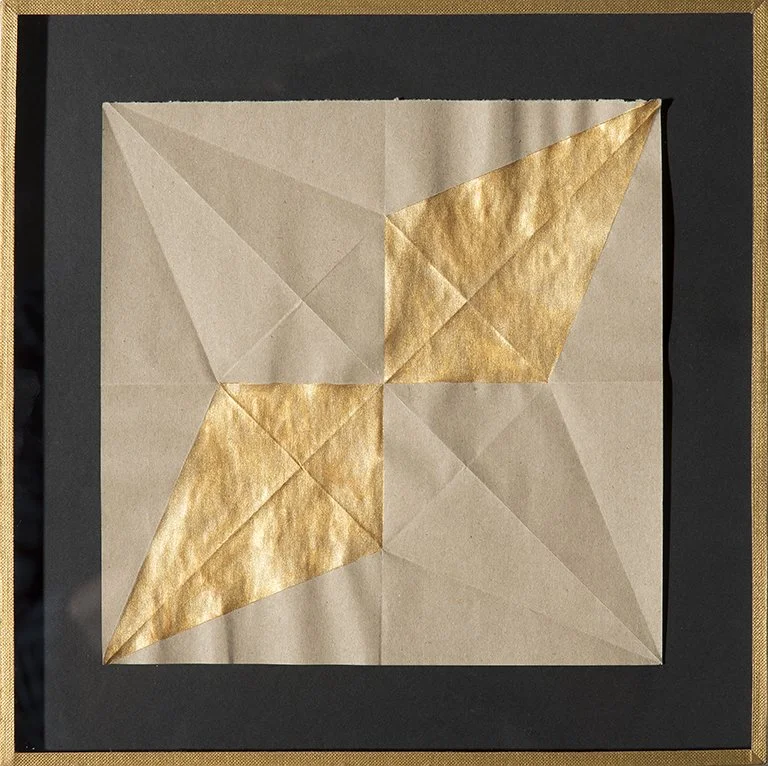
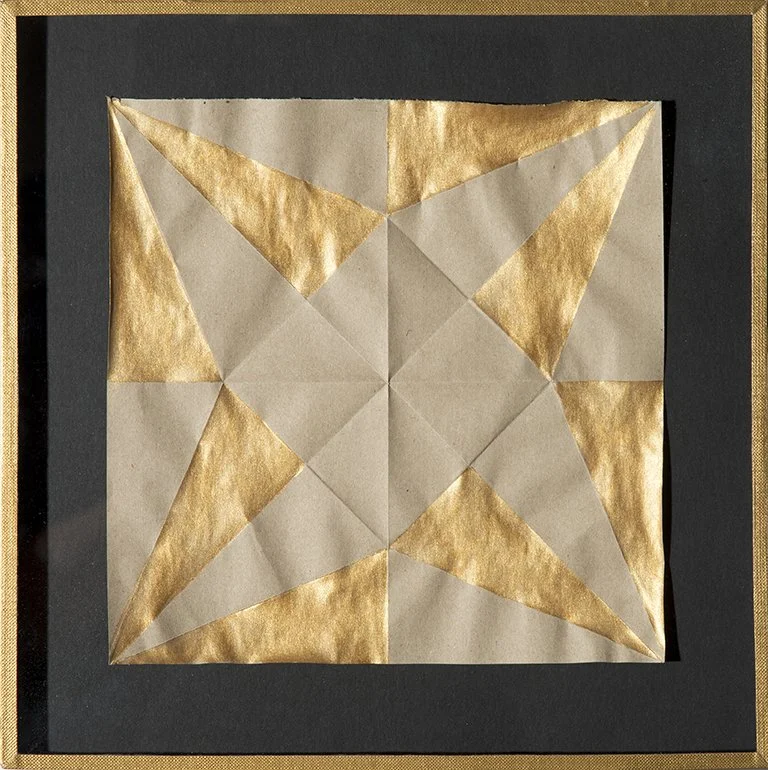

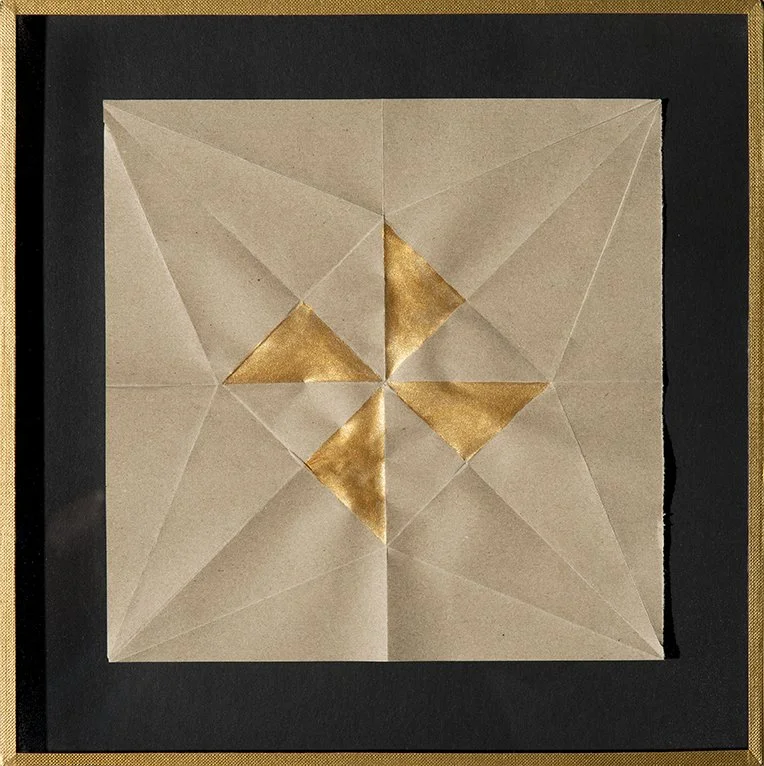
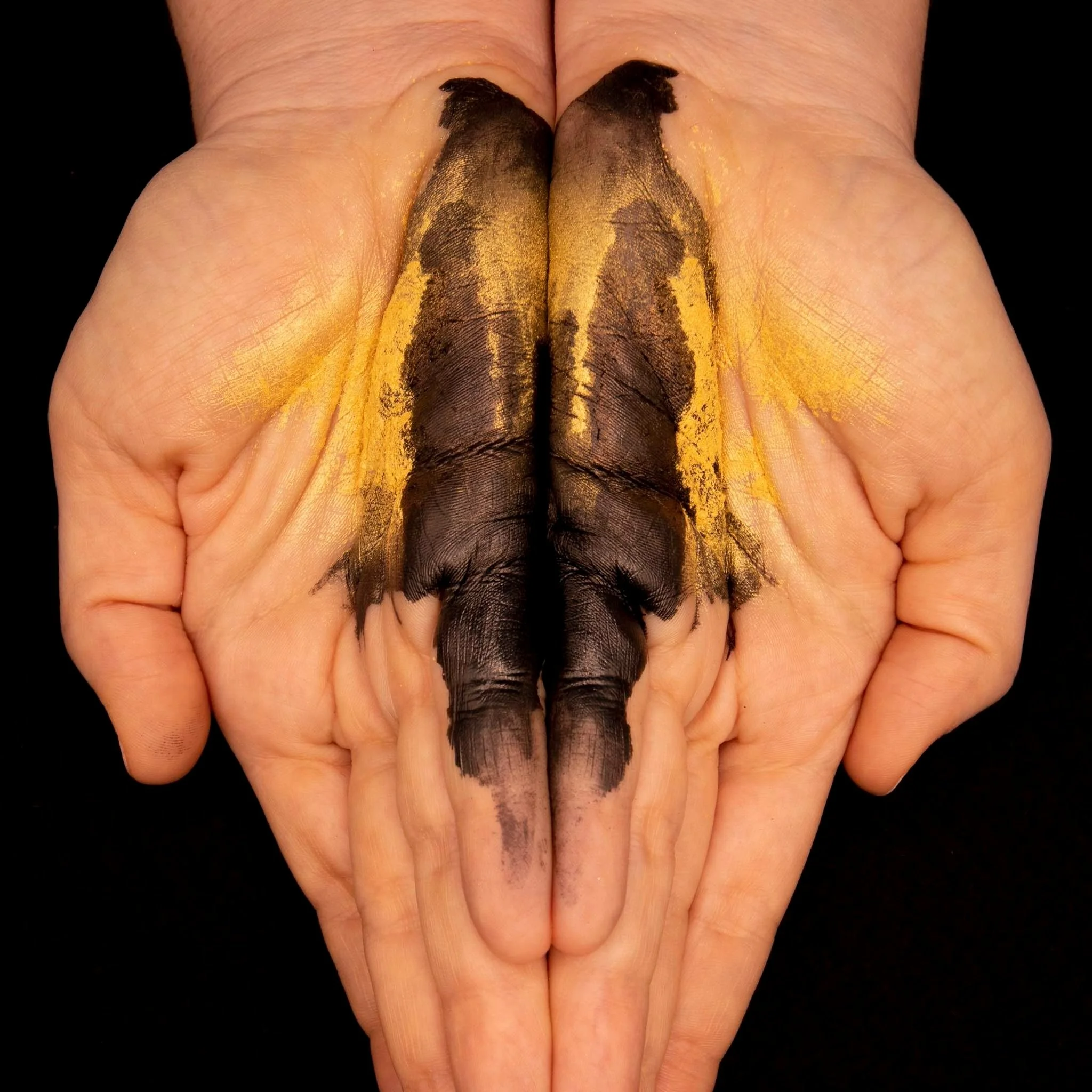
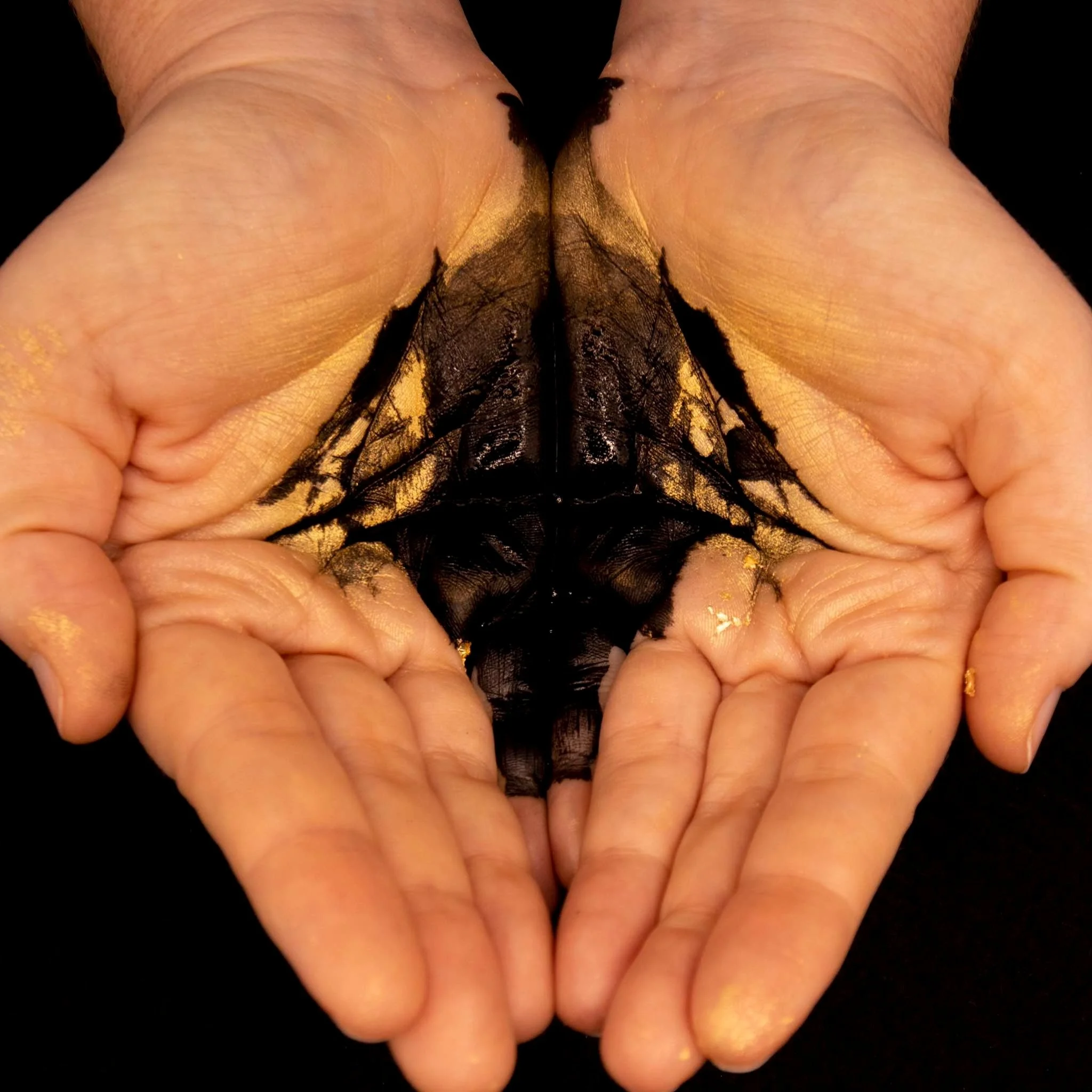


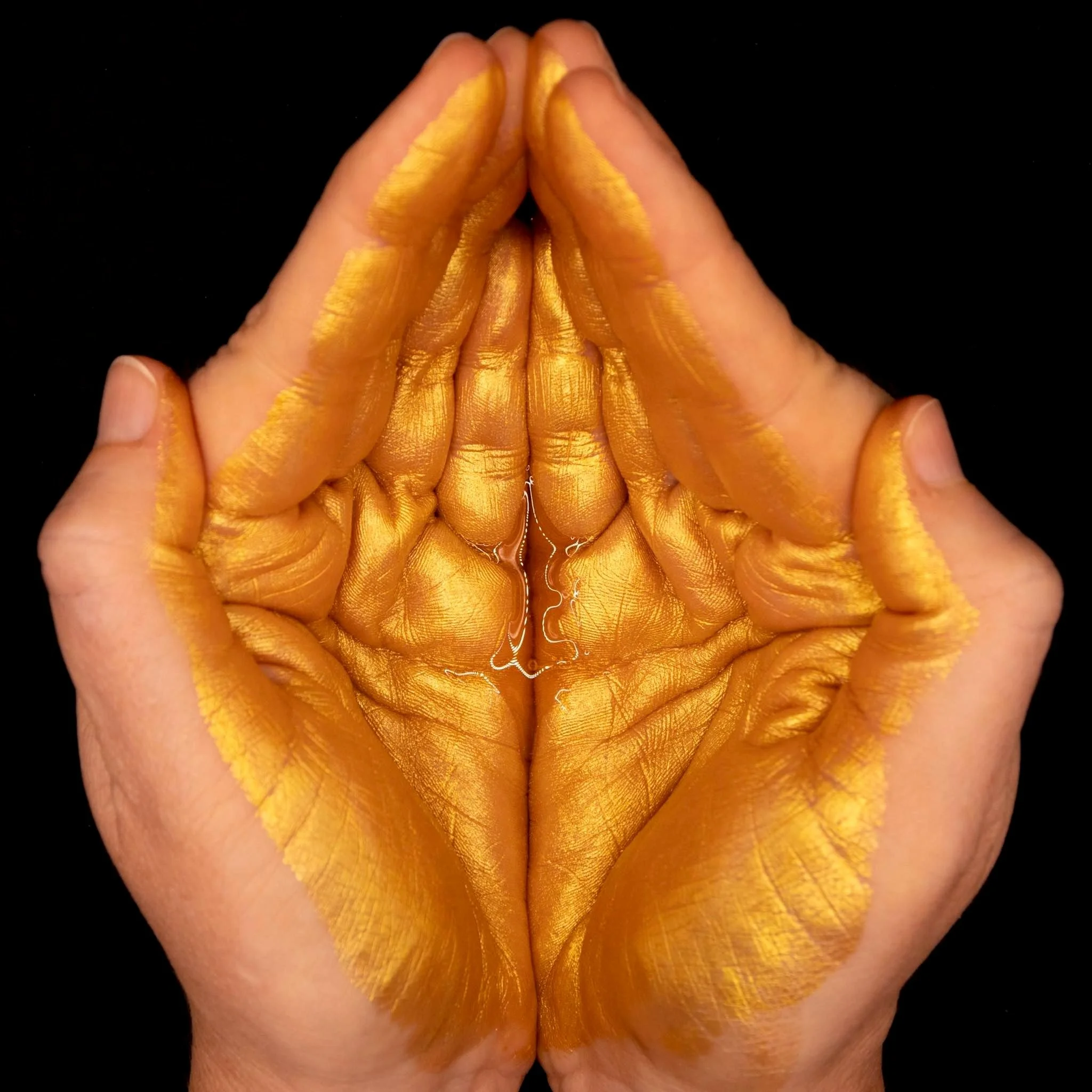

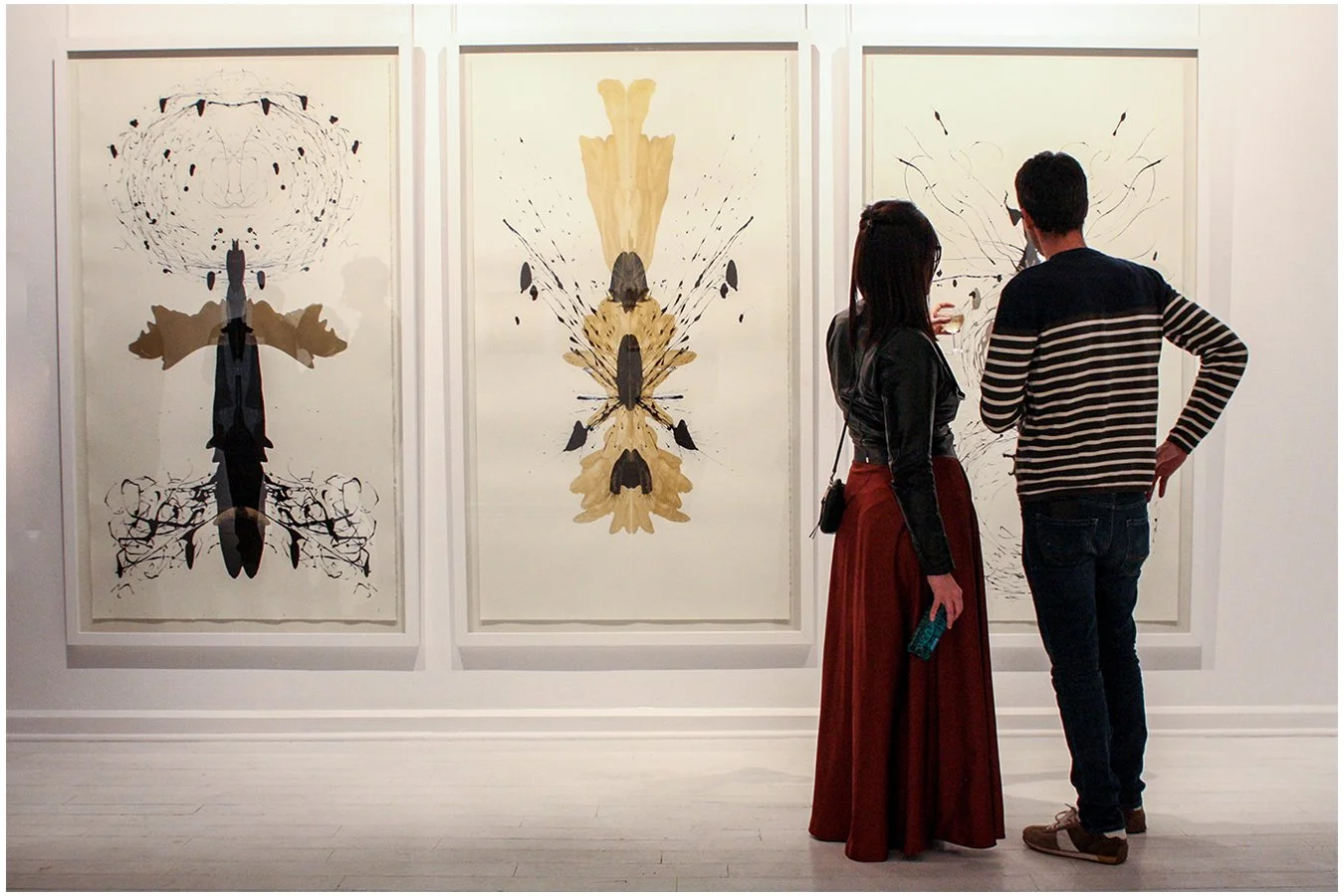
Animality, mortality, and the grotesque are all themes rendered tangible. Presenting a collection of work influenced by the writings of German novelist and short story-writer Franz Kafka, Lace’s work evokes the Kafkaesque through remnants of life and the dead, using animal skeletons, video installations, origami sculptures and more. With a specific interest in Kafka’s short story The Metamorphosis, Lace looks to manifest a mutual metaphor and dichotomy between human and animal that’s so often found in Kafka’s work.
Conceptualised & created by | Bronwyn Lace
Voice & Sound elements by | Bongile Gorata Lecoge-Zulu
Inspired by | Franz Kafka’s The Metamorphosis
